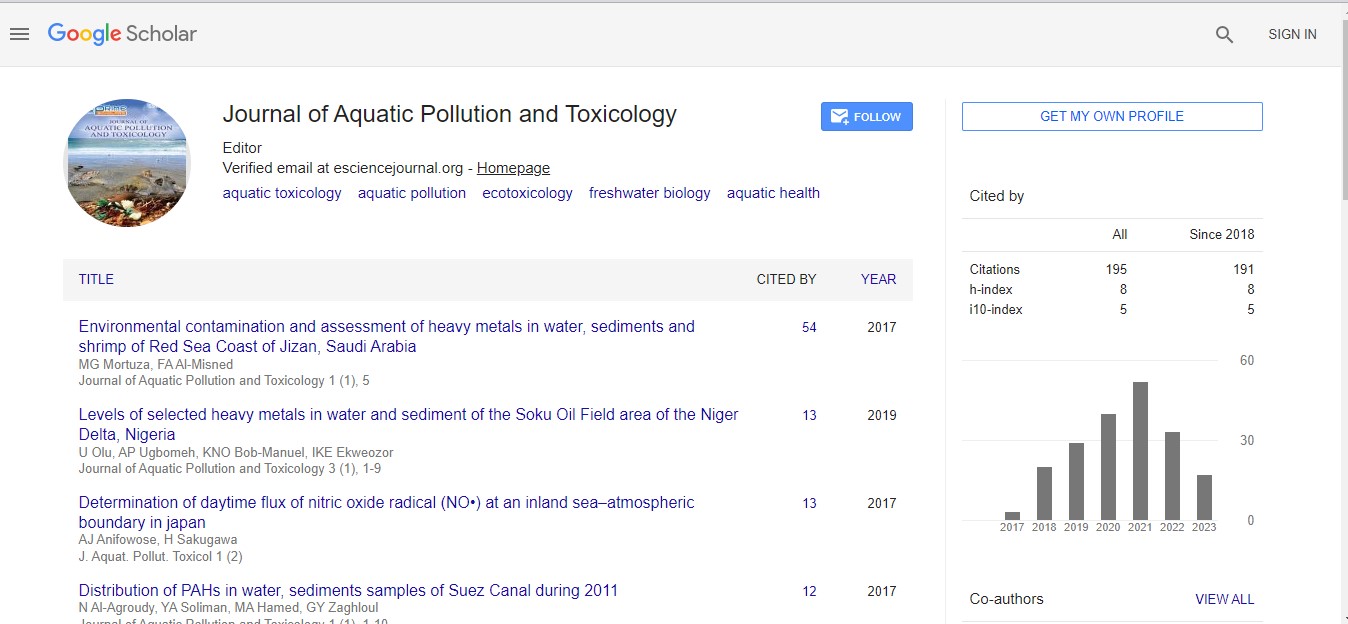Commentary Article - (2023) Volume 7, Issue 1
Exploring the Prevalence of Lead Poisoning and its Environmental Impact on Ecosystems and Human Health
Jeffrey Backstrand*
Department of Public Health, Rutgers University, United States of America
*Correspondence:
Jeffrey Backstrand,
Department of Public Health, Rutgers University,
United States of America,
Email:
Received: 02-Jan-2023, Manuscript No. IPJAPT-23-16202;
Editor assigned: 04-Jan-2023, Pre QC No. IPJAPT-23-16202 (PQ);
Reviewed: 18-Jan-2023, QC No. IPJAPT-23-16202;
Revised: 23-Jan-2023, Manuscript No. IPJAPT-23-16202 (R);
Published:
30-Jan-2023, DOI: 10.21767/2581-804X-7.1.8
Description
Foundation is the motivation behind this audit is to portray the
poisonous impacts of lead on the human body from origination
through adulthood. Results a poisonous weighty metal is lead
which is exceptionally hazardous when consumed and gathers in
the body’s significant organs, where it can cause different side
effects that change contingent upon the individual, the span of
openness, and the dose. In grown-ups, lead can raise circulatory
strain, diminished nerve conduction, exhaustion, state of mind
swings, sluggishness, trouble concentrating, impeded richness,
diminished moxie, migraines, blockage and, in serious cases, encephalopathy
or passing. End openness to harmful lead in Poland
stays a significant general medical condition. This audit covers the
scope of lead openness from gentle to serious. General well-being
endlessly gauges are additionally expected to diminish word
related and ecological openings to this weighty metal. Lead (Pb)
is a poisonous weighty metal that, when ingested, collects in the
blood, bones, liver, kidneys, mind, skin and different organs. Because
of the insufficient expulsion of lead from the human body,
its antagonistic wellbeing impacts can be both intense and constant.
In people, lead has been displayed to obstruct ordinary
working of the conceptive, liver, endocrine, safe, and gastrointestinal
frameworks. There is restricted proof that lead and its inorganic
mixtures are cancer-causing to people. Human openness to
lead can happen in various ways, all of which include openness
to weighty metals as natural poisons. Wellsprings of lead incorporate
soil, food, lead dust, contact with lead in ordinary items,
and working environment focuses. Lead has had different modern
purposes previously and is as yet utilized for various purposes
today. As of now, weighty metals are utilized in the creation
of sulfuric corrosive, link covering, paint and ceramics industry,
substance industry and development, binding materials, bearing and handout creation, atomic reactor safeguarding, avionics fuel,
covers, radioactive fabric and different holders. As of not long
ago, toxic house paints and tetraethyl lead in fuel were the significant
wellsprings of lead in the climate. Openness to harmful
lead in Poland stays a significant general wellbeing concern. The
reason for this audit is to portray the harmful impacts of lead
on the human body from origination to adulthood. Lead hinders
calcium and disrupts a few biochemical cycles that lead to its
harmful impacts, including its capacity to respond with proteins.
Once in the body, lead replaces calcium and collaborates with
biomolecules, slowing down typical capability. Lead diminishes
the action of different chemicals, adjusts their construction and
represses their movement by rivaling the necessary cations for
the limiting locales. Oxidative pressure actuated by lead is the
principal system of its harmfulness, causing changes in the structure
of unsaturated fats in layers (influencing cycles, for example,
exocytosis, endocytosis and flagging cycles). Lead can likewise
cause changes in quality articulation. The protein protamine is
associated with lead harmfulness through changes in quality articulation,
causing collaboration with protamine’s zinc-restricting
site. A few examinations have researched the impacts of Pb on
glucose-6-phosphate dehydrogenase (G6PD) action. This is on
the grounds that by causing frailty, the uprightness of the RBC
layer can be compromised, making it more delicate. Pb can likewise
repress the compound ferrochelatase and diminish iron (Fe)
consolidation.
Acknowledgement
None
Conflict of Interest
None
Citation: Backstrand J (2023) Exploring the Prevalence of Lead Poisoning and its Environmental Impact on Ecosystems and Human
Health. J Aquat Pollut Toxicol. 7:8.
Copyright: © 2023 Backstrand J. This is an open-access article distributed under the terms of the Creative Commons Attribution
License, which permits unrestricted use, distribution, and reproduction in any medium, provided the original author and source
are credited.

